John Janaro's Blog, page 206
August 10, 2017
Christina Grimmie: The Sorrow Remains
 I was going to write some notes on the posthumous album of Christina Grimmie tonight. But after two months of listening to the music, it's still hard to articulate my thoughts about it. The range of emotion evoked by this album remains overwhelming for me.
I was going to write some notes on the posthumous album of Christina Grimmie tonight. But after two months of listening to the music, it's still hard to articulate my thoughts about it. The range of emotion evoked by this album remains overwhelming for me.I cannot get beyond the aching, poignant perception of these last recordings: the combination of amazement at a stunning artistry in the process of blossoming into maturity and the pathos of the awful silence that haunts these songs, because we know that she will never sing them live or cheerfully appear on YouTube and dazzle us with stripped down piano-and-vocal versions of any of them.
Her family and friends did a remarkable job putting together some of the songs she had prepared in the period prior to her death 14 months ago, when she was murdered by a deranged gunman at a meet-and-greet. The result is a rich musical achievement that solidifies further her legacy, but is not currently receiving the attention it deserves.
The album appeared on the eve of the first anniversary of Christina's death, charted on iTunes for a short time, and then (it seems to me, at least) disappeared from the view of the music world. Maybe we're not ready for it yet.
 Team Grimmie is more ready and more appreciative than anyone. But even Team Grimmie--her dedicated international following, her group of "frands" (as she always called them) who connected with her through YouTube and digital media and at concerts, who supported and (being mostly teens) emulated her--is still processing the traumatic and strange experience of her death at the age of only 22.
Team Grimmie is more ready and more appreciative than anyone. But even Team Grimmie--her dedicated international following, her group of "frands" (as she always called them) who connected with her through YouTube and digital media and at concerts, who supported and (being mostly teens) emulated her--is still processing the traumatic and strange experience of her death at the age of only 22.Older folks are less ready. It is perhaps especially hard for old music hacks like me, who are parents of teenagers, who were stunned when they realized that this sweet kid on YouTube was doing something unique with the contemporary pop music that had never interested them before, bending and stretching it in new ways by the sheer force of her enormous talent and the radiance of her personality.
How do we get used to her death in the face of the powerful vitality of this new album?
If you love Christina and you love music, you can't escape the rush of questions about the fragility of life, the value of art, and the meaning of death when you listen to it.
In light of these aching questions, the album is appropriately titled All is Vanity (from the book of Ecclesiastes and the tattoo on her forearm). It is a collection that brings together several of the distinctive styles that Christina was developing in the last years of her tragically brief career. She always loved electronica, and the tech music comes out as her main template here. We might miss the simplicity of her melodious piano arrangements, but not really, because all the songs are driven by her soaring voice.
Contemporary pop and EDM styles are harnessed to create the atmosphere for her vocals which combine a classic, soulful R&B sound with her utterly unique stratospheric sonic gymnastics. She croons and hums and belts up and down her three-and-a-half octave range (and more) with a flawless pitch and the vocal control that Graham Nash thought was so remarkable that he described it as "insane" on season six of The Voice.
 The result is that a great vibe runs through the whole album. Sometimes you want to dance. Other times you want to hum, to swing, to close your eyes and move your head. You feel alive. You're glad to be alive.
The result is that a great vibe runs through the whole album. Sometimes you want to dance. Other times you want to hum, to swing, to close your eyes and move your head. You feel alive. You're glad to be alive.But life is such a fragile thing.
For this century, for this era, June 10, 2016 is "the day the music died."
Christina Grimmie believed in the resurrection of Jesus Christ from death, and so do I. There is much consolation is knowing that in death "life is not ended but changed." Faith, hope, and love give rise to the lively confidence that now she lives, truly and personally, in Christ. In His heart, she can have a new and wider and more profound capacity to touch the lives of all the people who love her.
In a sense she is more than ever the companion she always wanted to be, the friend of every person who was moved by her passion for music and life, of every person who ever approached her or hoped one day to approach her or wish they had approached her after a concert when she remained at the venue as late as necessary to greet everyone who wanted to see her. She offered her life to inspire people, to welcome strangers and reach out to them with love and with all the vulnerability that entails. And she died with her arms wide open, offering that love to a stranger.
 How can such love end in frustration? Thanks be to God, we don't have to be buried under the weight of such a question. Our hope in Christ includes an ongoing (even deeper) companionship with her.
How can such love end in frustration? Thanks be to God, we don't have to be buried under the weight of such a question. Our hope in Christ includes an ongoing (even deeper) companionship with her.But this companionship is now hidden in the mystery of God, and is silent to our earthly ears. Faith does not make this silence go away. It does not eliminate the poignancy and the tragedy of the silencing of Christina Grimmie's beautiful voice.
So it is that this album brings a touch of sorrow to my heart. I know it will not last forever, and even now it is mixed with an inexplicable joy and peace, as well as a gratitude for a collection of terrific music.
And yet the sorrow remains, and it must be allowed its space.
Published on August 10, 2017 20:50
August 9, 2017
Teresa Benedicta of the Cross, Martyr
"Human action cannot help us, but only the sufferings of Christ. My aspiration is to share them"
(Edith Stein, Cologne, Germany, 1938).
Edith Stein, a young Jewish philosopher who found Jesus Christ and entered a Carmelite convent as Sister Teresa Benedicta of the Cross, died in the gas chambers of Auschwitz on August 9, 1942. Today the Catholic Church honors her as a saint and a martyr who gave her life alongside her Jewish brothers and sisters -- the brothers and sisters of Jesus.

Edith Stein, a young Jewish philosopher who found Jesus Christ and entered a Carmelite convent as Sister Teresa Benedicta of the Cross, died in the gas chambers of Auschwitz on August 9, 1942. Today the Catholic Church honors her as a saint and a martyr who gave her life alongside her Jewish brothers and sisters -- the brothers and sisters of Jesus.

Published on August 09, 2017 09:30
August 8, 2017
Mental Illnesses are Real Illnesses that Need Treatment
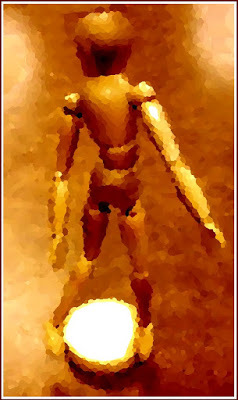 I keep coming back to this issue because it's so important that we get it straight.
I keep coming back to this issue because it's so important that we get it straight. It's an issue that can be difficult, because there's still a lot that we don't understand about mental illness and people who suffer from it. The pathology of "Interior Perception Distortion" is not accessible in the same way as a rash or a fever or a broken bone. It seems more bound up with personality, sensibilities, temperament, etc. It's difficult to empathize if we haven't experienced it ourselves, and it's not easily "fixed."
But we cannot afford to ignore it, or try to deal with it as if it were just a spiritual or moral problem, or assume that it's just another bogus evasion produced by the bad bad evil "modern world." Mental illnesses are real and they've been around from way back.
Anyone who gets sick enough knows it's not just a trick invented by doctors and drug companies. Sure, some people try to take advantage, which is not surprising. There are always people trying to make money off our sickness and our health, our fears and our desires, our search for quick and easy solutions. This is a problem that permeates the whole health care system; indeed, it's a key factor in the dysfunctionality of a consumerist society.
That doesn't mean that we should reject treatments for mental illness, including medical treatments. Psychiatric medications are overhyped in some cases, or used as an exclusive and formulaic response to certain conditions. But medications are also unreasonably feared in many cases where they can help.
Psychiatric medication is like a bandage, and bandages can be cumbersome. But they stop you from bleeding out of control all the time. Psychotherapy can accomplish significant things, or--in situations of chronic illness--it can at least help people manage a condition and reduce its constraints (even if they have to accept that it will always be in some measure debilitating).
This doesn't seem very satisfactory, but we must do the best we can. Stop the bleeding and work to heal the wound or at least to live as fully as possible with the condition. If the bleeding starts again, we have to do the best we can to try to stop it...again. We may need to use a lot of "bandages." But make no mistake: mental illnesses don't get better on their own. We must seek treatment and care for these illnesses.
Of course, we can only do our best for ourselves and our loved ones, and fight as hard as we can with whatever means we have available to us. Mental illness may still make a big mess out of life, and cause pain to ourselves and others. Like any other affliction or personal trial, we must use our freedom wisely but also be willing to accept that some things are beyond our control. We must be patient with one another, sorry (and forgiving) for any real personal failures, and beyond that not be burdened by false guilt or grudges.
Of course we have to pray. We can't live any personal challenge without prayer, and illness--whether externally physical or mental--is a profound challenge. Should we pray for healing? Certainly! Prayer bring all kinds of mysterious healing, but that's God's business. We need to give Him room to work in us, and we need to listen, because God loves us and wants to teach us to love Him.
But we might pray deeply and ardently for healing and still need medication-- and that's humbling. The Lord may not take away mental illness, but He'll use it for the good and He'll help us to begin to "see" it within the scope of His loving plan to bring us to Himself. We won't see it completely, but He will give us what is needed to draw us onward; He will give us enough to take the next step and then the next and then the next....
There seems to be a lot of mental illness today, and that is not surprising either. We live in a tumultuous world, with unprecedented power that makes our lives materially advanced and complex, but also puts many of us under intense and peculiar stress and imperils our health in ways we don't even understand. It's a world that triggers predispositions to illnesses like anxiety, OCD, bipolar disorder, depression.
People have to judge how to use resources that can help even in limited ways, and they can't do it alone. It challenges families, friendships, and communities --but with God's grace it can bring them closer.
Stigma and ignorance, however, are useless and dangerous. People who are fighting against real illness --fighting to survive and indeed to live as best as they can --deserve our understanding, our help, our support, our patience, and our compassion.
Published on August 08, 2017 20:00
August 4, 2017
A Study of a White Rose
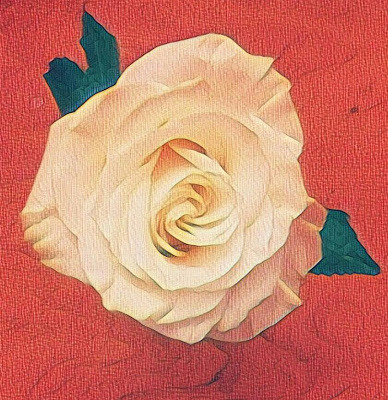 This illustration began as a photograph from my cell phone of a single white rose standing in a glass of water on our dining room table.
This illustration began as a photograph from my cell phone of a single white rose standing in a glass of water on our dining room table.The digital photo is the "base" of the graphic illustration. The work of applying filters and various edits and adjustments using photo editing software engages an active creativity and requires some time and effort.
The digital applications make available to me opportunities to work with an image in ways that I would not be able to do "on my own," i.e. by freehand drawing. I begin these experiments in computer graphics with my own digital photographs, and then various types of software provide the tools to manipulate the images.
Here I go beyond "using photoshop" to simply improve or clarify the photo as a photo, within the photographic art form. I use it instead to make something different, something distinct in style and form, often (though not in this instance) adding further content or graphic imagery as well as redesigning the original image.
Even with inexpensive and widely available resources, some bold and striking visual graphics are possible.
My own very modest improvisational efforts are enough to convince me that digital graphic design is an art form that has vast potential for development. It is not "hard" to make something that "looks pretty good," but the higher levels of excellence in this craft will still stand out, and new possibilities will open up for original expressions of brilliance in visual artistry.
Published on August 04, 2017 20:06
August 3, 2017
He Can Create Us Anew
 Each of us is created by God's mercy, redeemed by His mercy, and transformed by His mercy.
Each of us is created by God's mercy, redeemed by His mercy, and transformed by His mercy.The God who gives us being, out of nothingness, can bring new life to restore us from all the violence we have done to ourselves. He can create anew, overcoming the "voluntary nothingness" of our sins.
We are all sinners, and we all struggle with the temptation to run away from God. Even if we willingly alienate ourselves from God by denying Him or doing violence to His wise and loving plan for the world and for the truth of the human person, we do not need to be broken and destroyed forever. We do not need to be lost in our own self-made abyss of separation from God and from our own true identity.
God wants to create us anew. He has made the way, and His grace is already at work seeking ways to stir up in us the desire and the hope for healing.
We can choose to wallow in our own abyss, or we can cry out to Him, We can beg Him that the mercy He has already given might take hold of us and change us. We can trust in Him. Trust reaches out to a Presence that we recognize. It adheres to that Presence, and follows Him. It surrenders itself to the ways of God's mercy and love. Trust never gives up.
If we trust in Him, He will really change us, He will give us a new heart, He will work miracles. There is no evil in us so great that He cannot heal, and He wants to awaken, change, and give us a new energy of love beyond anything we can imagine. We must trust in Him. We must adhere to Him. We must follow Him. He is Mercy.
On the Cross, He has revealed and given His mercy, to me and you, to each one of us. And He remains with us in the Church, in the miracle of the sacraments, and in the faces of those people who have shown us that it is possible to be changed, to live in a new way.
We must go to Him in trust, to let Him heal us and transform us. If we trust in Jesus Christ, He will make us into the persons He has created us to be.
Published on August 03, 2017 20:43
August 2, 2017
Wheat and Weeds, Decision and Patience
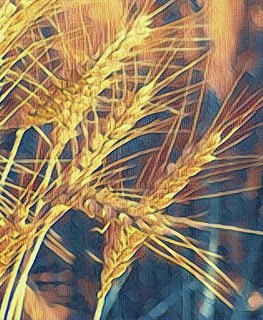 Tuesday's Gospel reading on the parable of the wheat and the weeds gave me another opportunity to revisit the Pope's reflections in a recent Angelus address.
Tuesday's Gospel reading on the parable of the wheat and the weeds gave me another opportunity to revisit the Pope's reflections in a recent Angelus address.Here it appears that Francis draws on the famous observation of the great Alexander Solzhenitsyn that the line separating good and evil is not found between nations or parties or classes, such that we could fix the problem of evil simply by eliminating the people on the wrong side of the line. Rather, Solzhenitsyn observes that this line passes right through the human heart—every human heart.
Francis uses this parable of the wheat and the weeds in order to draw our focus to the perennial circumstances of the world and the power of the redemption to win the victory of evil by purifying our hearts according to God's wisdom:
"With this image Jesus tells is that in this world the good and the evil are so intertwined that it is impossible to separate and extirpate all the evil. God alone can do this, and He will do so in the Last Judgment. The present situation, with its ambiguities and its composite character, is the field of the freedom, the field of the freedom of Christians, in which the difficult exercise of discernment between good and evil takes place.
"Therefore, in this field, it is about combining, with great trust in God and in His Providence, two seemingly contradictory attitudes: decision and patience. The decision is to want to be the good seed — we all want this, with all our strength, and, hence, distancing ourselves from the Evil One and his seductions. Patience means to prefer a Church that is leaven in the dough, who does not fear soiling her hands washing the clothes of her children, rather than a Church of 'pure ones,' that pretends to judge before the time who is an who is not in the Kingdom of God.
"The Lord, who is Wisdom incarnate, helps us today to understand that the good and the evil cannot be identified with defined territories or specific human groups: 'These are the good, these are the evil.' He tells us that the boundary line between the good and the evil passes in the heart of every person, passes in the heart of every one of us, that is, we are all sinners.
"Jesus Christ, with His Death on the Cross and Resurrection, has freed us from the slavery of sin and He gives us the grace to walk in a new life. However, with Baptism He has also given us Confession, because we are always in need of being forgiven for our sins.
"To look always at the evil that is outside of us, means to not want to recognize the sin that is also in us....
"May the Virgin Mary help us to pick up in the reality that surrounds us not only the filth and evil but also the good and beautiful; to unmask Satan’s work but especially to trust in God’s action that makes history fruitful."
~Pope Francis, Angelus, Sunday July 23, 2017
Published on August 02, 2017 20:34
July 31, 2017
Contemporary Music: Finding the Gold in the Mud
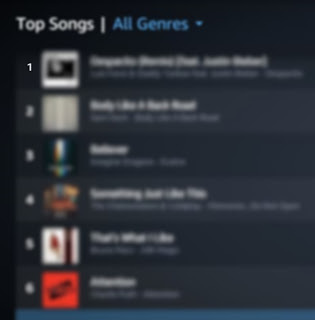 Paging through Amazon Music's charts....
Paging through Amazon Music's charts....Why do I bother? Looking for gold in the mud. Occasionally I stumble on something good. It's like flipping through the records in a record store used to be, in the olden days.
Here's the thing: Artists are peculiar. I know that. Musicians (in this case) are peculiar. I get that. I'm a musician myself, and a writer, and lately I've been messing about with photography and graphics. I know that I'm a piece of work. I'm not surprised, therefore, to find that artists are weird.
Creative intuition strains the neurons, as does the tenacity to carry it through to an artistic expression that can be experienced by others. It is intense, concentrated, arduous labor. And many artists are already operating with exotic cognitive wiring and a highly sensitive system of overall perception. Add to this mix the drive of ambition, the pressure to entertain and to be an efficient cog in the wheels of a multi-billion dollar industry, the tumultuous cultural milieu with its widespread decadence, and... and... and...
...the music is going to be weird.
Nevertheless, even given all of this awareness of the challenges of the creative enterprise, it's still a bit staggering to see the freak show that parades by under the name of "popular music."
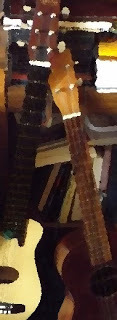 These are talented people. Okay, some of them are just charlatans but some of them are talented people. But there is a weakness of human context, an excess of powerful gadgets and tricks, and a relentless push to reduce works of art into efforts to get attention. The resulting noise is deafening.
These are talented people. Okay, some of them are just charlatans but some of them are talented people. But there is a weakness of human context, an excess of powerful gadgets and tricks, and a relentless push to reduce works of art into efforts to get attention. The resulting noise is deafening.Or, to return to the original metaphor, there's a lot of mud. It's easy to say "yuck" to all the mud. It's also easy (and frankly delusional) to pretend that the mud is gold. The challenge consists in finding the gold. Because there is gold to be found. There are diamonds in the mud. Some are flawed diamonds, but admirable nonetheless.
So it is that I desire to search for whatever has value, to clean it up and make it shine. Or, if it's tragically broken, to mourn the loss and trace the fractured lines of beauty.
Music is a complex crafting of sound, and the world today is filled with unprecedented sounds. We want to be careful to distinguish crass cacophony from the authentic effort to shape hard, brash, strange sounds into rhythms and harmony and song. There is beauty to be found here, made with the unusual sounds drawn from the hum and throb of our technologically sophisticated everyday environment.
This music can enrich our lives, and it is made by some surprisingly peculiar people. Certainly we are looking for creative work that has real value, and therefore we can't just toss away our standards or our sense of judgment in order to affirm the latest trends. But let's not be snobs either.
It's worth the effort to keep exploring music, to keep listening.
Published on July 31, 2017 20:53
July 29, 2017
Martha of Bethany: Disciple and Believer
 Poor Saint Martha. Everyone seems to remember her as the woman who was "busy about many things" and who complained to Jesus that her sister Mary wasn't helping with the dishes.
Poor Saint Martha. Everyone seems to remember her as the woman who was "busy about many things" and who complained to Jesus that her sister Mary wasn't helping with the dishes.But we should also remember Martha as a beloved friend of Jesus (along with her siblings Mary and Lazarus) and one of his truly great disciples. In chapter 11 of John's Gospel, Jesus reveals himself to her as the One who conquers death and brings eternal life. In this text, we see Jesus invite her to believe in him. Her response shows clearly that she has come to know in a very deep way the "one thing necessary."
From the Gospel for the feast of St Martha:
Jesus said to Martha, "'I am the resurrection and the life; whoever believes in me, even if he dies, will live, and anyone who lives and believes in me will never die. Do you believe this?' She said to him, 'Yes, Lord. I have come to believe that you are the Christ, the Son of God, the one who is coming into the world'" (John 11:25-27).
Published on July 29, 2017 15:05
Scenes from the Summer
 Now that the rain has moved in and appears set to bring July to an unusual end, I'm just going to put a few miscellaneous photos from what has been a mostly hot month. Above, we see the gathering of clouds on a late afternoon Blue Ridge horizon.
Now that the rain has moved in and appears set to bring July to an unusual end, I'm just going to put a few miscellaneous photos from what has been a mostly hot month. Above, we see the gathering of clouds on a late afternoon Blue Ridge horizon.Below, we have had lots of wildflowers in the fields. The chicory, for example:
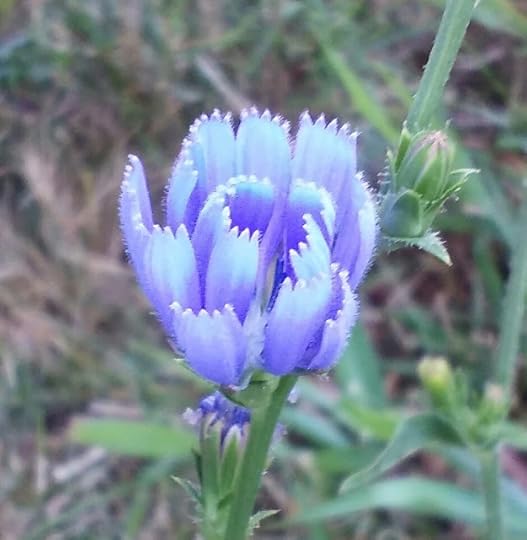
And in spite of all appearances, Jojo is not sleepy here as she wheels her scooter up the driveway. But the kid who used to ham it up so much for the camera only a couple of years ago is harder to take a good picture of these days. I have to be satisfied with what I can sneak around and get. She was actually goofing around here and having fun. Seriously!
Published on July 29, 2017 10:07
July 26, 2017
Sowing the Seed in Our Hearts

The Gospel reading for today repeated the first section of the reading from Sunday, July 16. It recounted the parable of the sower and the seed (Matthew 13:1-9). This gave me the opportunity to revisit a wider interpretation of the parable as Pope Francis expressed it in his Angelus Address for the Sunday before last. Francis's exposition of the imagery provides a good meditation on God's work in our lives.
First, here is the text from the Gospel:
Jesus taught the people in parables, saying, "A sower went out to sow. And as he sowed, some seed fell on the path, and birds came and ate it up. Some fell on rocky ground, where it had little soil. It sprang up at once because the soil was not deep, and when the sun rose it was scorched, and it withered for lack of roots. Some seed fell among thorns, and the thorns grew up and choked it. But some seed fell on rich soil, and produced fruit, a hundred or sixty or thirtyfold. Whoever has ears ought to hear" (Matthew 13:3-9).Jesus then goes on (in verses 10-23) to give his disciples the foundational way of reading the story. The seed bears fruit or fails to do so depending on the conditions of the place where it falls. Jesus identifies each of images of the conditions of the ground with a specific set of people: those who have no openness (the path), those who are superficial (the rocky ground), those who are preoccupied with worldly concerns and fears (the thorns), and finally those who receive the Gospel with joy (the rich soil).
A further meditation and personal application of this story, however, may lead us to discover that we have all four of these conditions in our own hearts and in various facets of our lives. The Lord sows the seed of his love prodigiously in our hearts, but how much of it do we allow to flourish? We don't have very much "rich soil" in our hearts where the gift of God can take root. Too often we are distracted, preoccupied, or negligent. The Lord longs to turn the whole of our hearts into his own flourishing fields and gardens of new life.
However, as Pope Francis indicates, the same Lord who sows will also tend more and more the soil of our hearts through prayer and the sacraments. He will clear away the obstacles and prepare the land to bear more abundant fruit:
"The parable concerns above all us: it speaks, in fact, of the soil rather than of the sower. Jesus performs, so to speak, a 'spiritual radiography' of our heart, which is the ground upon which the seed of the Word falls.
"Jesus invites us today to look inward: to give thanks for our good ground and to work on the ground not yet good.
"Let us ask ourselves if our heart is open to welcome with faith the seed of the Word of God. Let us ask ourselves if the rocks of laziness are still large and numerous within us; [if] we identify and we call by name the brambles of our vices.
"We find the courage to make a beautiful reclamation of the land, bringing to the Lord in Confession and in prayer our stones and our stumps. In doing so, Jesus, a good sower, will be happy to do an extra work: to purify our hearts, removing the stones and thorns that stifle his Word."
Published on July 26, 2017 18:40



